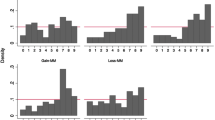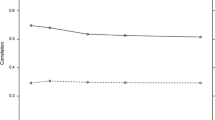Abstract
We examine in the laboratory how having the opportunity to donate to a charity in the future affects the likelihood of engaging in dishonest behavior in the present. We also examine how charitable donations are affected by past ethical choices. First, subjects self-report their performance on a task, which provides them with an opportunity for undetected cheating. In the second stage they can donate some of the money earned in the first stage to a charity. Only subjects in the treatment group know about the opportunity to donate in the second stage. We find that more subjects cheat if they know they can donate some of the money to charity. We also find that subjects in treatment end up donating less to charity and that both honest and dishonest subjects donate less in treatment. We propose a new hypothesis that explains these results: past violations of social norms numb one’s conscience, leading to more antisocial behavior.



Similar content being viewed by others
Notes
We ignore all other reasons an individual may have to donate to charity and we focus on her desire to conform with a social norm requiring one to be charitable. We assume that any charitable donation short of δ yields the same amount of guilt. This restricts a subject’s choice of charitable donation to the set {0,δ}. We use this assumption merely to simplify the exposition; all predictions remain qualitatively the same when we relax it.
Subjects may differ in γ, how tolerant they are to guilt. They may also differ in how much they think it is appropriate to donate to charity, δ. We assume that we obtain the same distribution of types (γ,δ) in Control and Treatment. For concreteness, we assume that γ and δ are independent draws from a uniform distribution with support between 0 and 1. This assumption is without loss of generality. If we had simply asked subjects to donate an amount to charity, those with δ<γ would have donated δ and the rest would have donated 0, obtaining the intuitive result that subjects who are less tolerant to violations of social norms donate more on average.
We control for the subjects’ gender, age, location (Stanford or California State), major (business-related or other), and the number of subjects in the session. The coefficient on Treatment is 1.47 with a p-value of 0.10. A few additional tests verify that our result is indeed robust. These are available upon request.
50 % of subjects don’t report a success in Control, compared to only 38 % in Treatment. This difference is significant at 10-percent significance level in a one-sided Pearson Chi-squared test of equality of proportions (p-value=0.08).
In all regressions we control for all available exogenous variables: the subject’s age, gender, major, location, as well as the number of subjects in the session. Using a Tobit censored from below and above or an ordered logit specification would not change any of the conclusions of the analysis. These specifications are available upon request.
Approximately one quarter of the difference in donations between Treatment and Control is due to the “extensive” margin: more subjects fail to donate any positive amount to charity in Treatment than in Control. The rest is due to the “intensive” margin: subjects donating positive amounts, but less on average in the Treatment group. Not all of the “intensive” margin is caused by fewer subjects donating their entire amount to charity in Treatment. The regressions supporting this analysis are available upon request.
Details of this general argument are presented in Appendix 3.
The effect of treatment on honest subjects is −1.56, which is significantly different from zero at 10-percent significance level.
See Appendix 3 for more details.
The details of these calculations are presented in Appendix 2.
We obtain this prediction from assuming that the pro-social behaviors are perfect complements. We can obtain Result 4 in our model from imposing a weaker and more realistic assumption of less than perfect complementarity, in which the conscience is only partially numbed. For example, suppose that for a fraction of subjects in Control the numbing effect (or enhancing, under moral cleansing assumption) on their conscience wears off by the time they have to make the second ethical choice. Because the decisions are simultaneous for subjects in Treatment, all subjects who cheated have their conscience numbed (or enhanced). Then we would obtain Result 4 under conscience numbing, but not under moral cleansing.
The difference is statistically significant in a Mann-Whitney test at 1-percent significance level. Controlling for other variables, the coefficient on Treatment is −1.45, statistically significant at 10-percent significance level.
References
Andreoni, J. (2006). Philanthropy. In L. A. Gerard-Varet, S. C. Kolm, & J. M. Ythier (Eds.), Handbook of giving, reciprocity and altruism (pp. 1201–1269). Amsterdam: North-Holland/Elsevier.
Camerer, C. F. (2003). Behavioral game theory: experiments in strategic interaction. Princeton: Princeton University Press.
Carpenter, J., Connolly, C., & Myers, C. (2008). Altruistic behavior in a representative dictator experiment. Experimental Economics, 11(3), 282–298.
Cassone, A., & Marchese, C. (1999). The economics of religious indulgences. Journal of Institutional and Theoretical Economics, 155(3), 429–442.
Cialdini, R. B., Darby, B. L., & Vincent, J. E. (1973). Transgression and altruism: a case for hedonism. Journal of Experimental Social Psychology, 9(6), 502–516.
Fischbacher, U., & Föllmi-Heusi, F. (2013). Lies in disguise. An experimental study on cheating. Journal of the European Economic Association, 11(3), 525–547.
Gill, D., Prowse, V., & Vlassopoulos, M. (2012). Cheating in the workplace: an experimental study of the impact of bonuses and productivity. Working paper.
Gneezy, U. (2005). Deception: the role of consequences. The American Economic Review, 95, 384–394.
Gneezy, U., Imas, A., & Madarasz, K. (2012). Conscience accounting: emotional dynamics and social behavior. Working paper.
Hibbert, S., Smith, A., Davies, A., & Ireland, F. (2007). Guilt appeals: persuasion knowledge and charitable giving. Psychology & Marketing, 24(8), 723–742.
Hurkens, S., & Kartik, N. (2009). Would I lie to you? On social preferences and lying aversion. Experimental Economics, 12, 180–192.
Kotchen, M. (2006). Green markets and private provision of public goods. Journal of Political Economy, 114(4), 816–834.
Kuran, T. (1996). The discontents of Islamic economic morality. The American Economic Review, 86, 438–442.
Lundquist, T., Ellingsen, T., Gribbe, E., & Johannesson, M. (2002). The aversion to lying. Journal of Economic Behavior & Organization, 70, 81–92.
Mazar, N., & Ariely, D. (2006). Dishonesty in everyday life and its policy implications. Journal of Public Policy & Marketing, 25, 117–126.
Monin, B., & Miller, D. T. (2001). Moral credentials and the expression of prejudice. Journal of Personality and Social Psychology, 81(1), 33–43.
Sachdeva, S., Iliev, R., & Medin, D. L. (2009). Sinning saints and saintly sinners: the paradox of moral self-regulation. Psychological Science, 20(4), 523–528.
Author information
Authors and Affiliations
Corresponding author
Additional information
We are grateful to the editor and two anonymous referees for their extremely helpful comments and suggestions. We benefited from discussions with Dan Ariely, Michael Bailey, Doug Bernheim, Jed DeVaro, Dan Fragiadakis, Martin Gervais, Asen Ivanov, Uzma Khan, Muriel Niederle, Jonathan Meer, Tomás Rodriguez Barraquer, Roberto Weber, and Nicolas Ziebarth. We would like to also thank participants at the University of Iowa, California State University, East Bay, Bay Area Behavioral and Experimental Economics workshops as well as the ESA meetings in New York and Tucson, the ESA European conference in Cologne, the WEAI conference in San Francisco and the SEA conference in New Orleans for their helpful comments. We would also like to acknowledge the financial support we received from California State University, East Bay. All errors are ours.
Electronic Supplementary Material
Below is the link to the electronic supplementary material.
Rights and permissions
About this article
Cite this article
Cojoc, D., Stoian, A. Dishonesty and charitable behavior. Exp Econ 17, 717–732 (2014). https://doi.org/10.1007/s10683-014-9391-2
Received:
Accepted:
Published:
Issue Date:
DOI: https://doi.org/10.1007/s10683-014-9391-2




